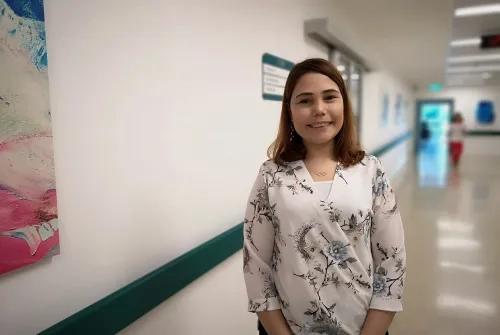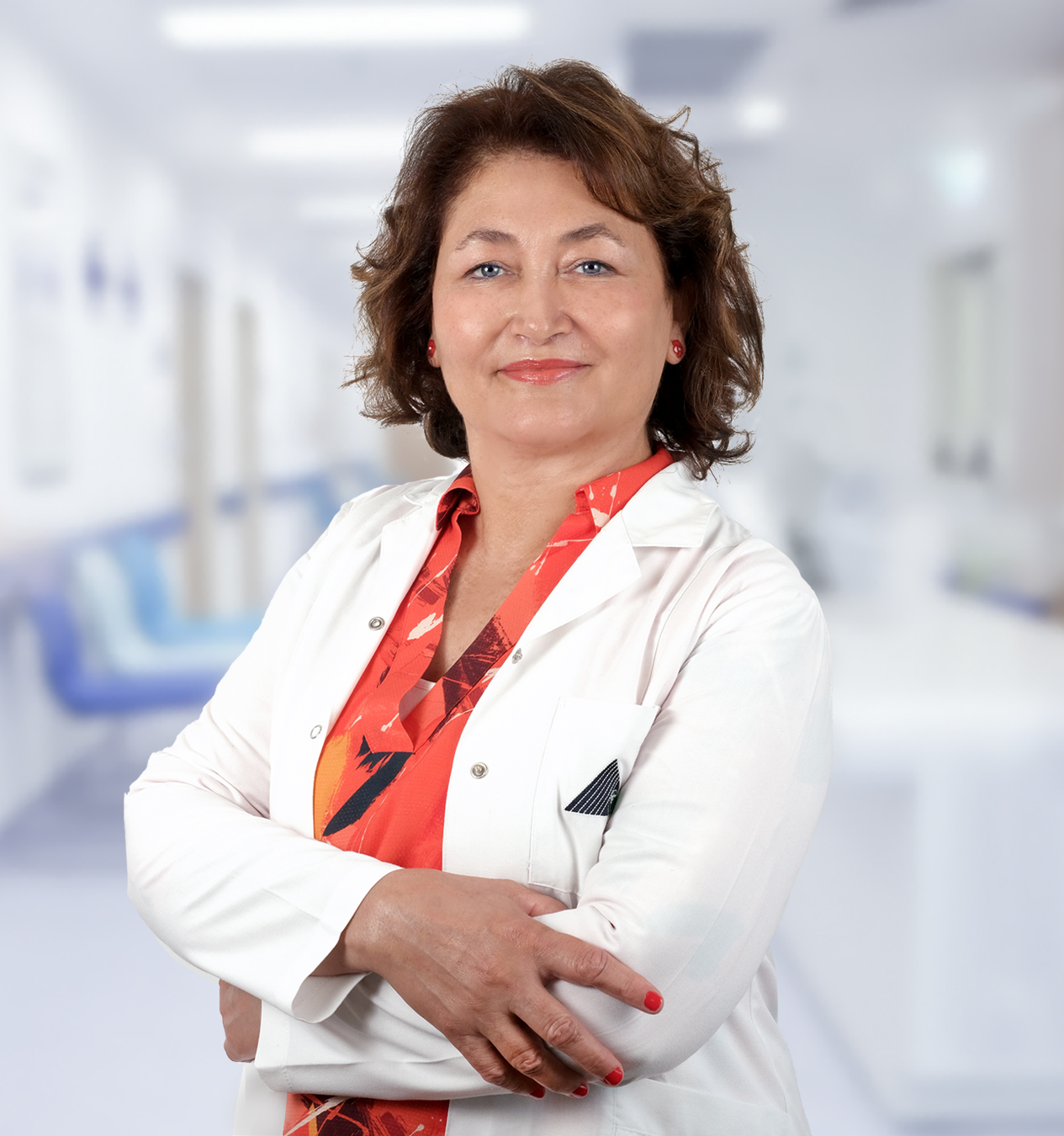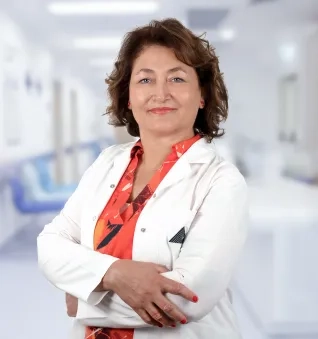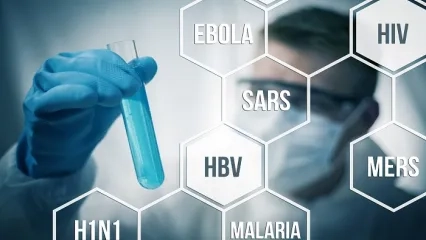Alo Yeditepe
Alo Yeditepe
Fighting with Thalassemia: Meral Yılmaz
Meral, who has been living with thalassemia for 27 years, says, "I have never isolated myself from society"
Meral Yılmaz, one of the approximately 3,500 thalassemia patients in our country, is an exemplary success story with her successful fight against this disease. Her illness could not prevent her from continuing her educational life and becoming an individual connected to life…
Thalassemia, which is common, especially in countries bordering the Mediterranean, is a problem in which regular checks and patient compliance are extremely important from the moment of diagnosis. According to statistics, there are approximately 3,500 thalassemia patients in our country. In societies where consanguineous marriages are common, such as Turkey, the incidence is increasing. Meral Yılmaz, who was diagnosed with thalassemia major when she was 6 months old, is also one of the babies born as a result of consanguineous marriage. Moreover, 3 children and her brother have thalassemia in her family, and the other is a carrier.
Following the diagnosis of a hereditary blood disease genetically transmitted from generation to generation, Meral Yılmaz started to receive blood transfusions. As the young girl became aware of her illness, she held on tightly to life against it. She did not let her illness get in the way of her life. She won the university first. She worked during the day and went to school in the evening. She graduated from school with a good degree.
Meral Yılmaz, currently working in the medical accounting department of a private hospital, said: “I have had difficult days since childhood. But I have never isolated myself from society. I preferred to hold on to life.”
“I Became Aware of My Illness When I Was in Primary School”
"I do not want to be marginalized by society," said Meral Yılmaz, describing her struggle to hold on to life, which she has been carrying on for 27 years with blood support.
“I am the second child of a family of three children. She was diagnosed with 'thalassemia major', which is Mediterranean anemia, from a 6-month-old baby. But when I started school at the age of 7, I could say that I became aware of my illness. When I went to school, I always felt different from my peers. I could not run when everyone else was running. I could not eat everything easily, especially the foods containing iron. And I was often sick. I was always different from my friends. Due to my illness, I had complaints of weakness, sleep, fatigue, low back pain, and joint pain in the body. These symptoms tell me that my blood rate is decreasing. My body is used to it. Over time, I can feel my blood decrease or when it is high again.''
A Life-Conduct, Compliant Patient
Yeditepe University Koşuyolu Hospital Pediatric Bone Marrow Transplantation Clinic Responsible, who has been treating and monitoring Meral Yılmaz for the last three years, stated that they are trying to give Meral a quality life with treatment and gave the following information:
“Meral is a compatible patient; her development and life are also quite comfortable as her treatments are done as regularly as possible. They can live their lives like healthy people. A blood transfusion is performed every 15-20 days. We try to give her a quality life. There is still no bone marrow donor for her. Maybe a stem cell or gene therapy will be found for her in the coming days.”
Consanguineous Marriages Increase the Risk
Our expert, who draws attention to consanguineous marriages in thalassemia, a genetically transmitted disease, said: "As with many genetic diseases, the risk of thalassemia is increasing with consanguineous marriage. In Turkey, consanguineous marriages are very high. More importantly, 70 percent of them are first-degree relatives. It is important to inform the community about this.”
Life-Long Blood Support is Needed to Survive
Our expert gave the following information about the emergence of the disease: "It is a genetic problem called hemoglobin in the red spheres that carry oxygen in our body. The patient is developing severe anemia. The disease is usually noticed between 3 months and 1 year of age from birth. Parents apply to the physician with complaints of pallor and loss of appetite in the child. There may be mild jaundice in the eyes and swelling in the abdomen due to enlarged liver and spleen.”
Reminding that these patients have to take blood for life in order to live, our specialist gave the following information about the treatment: “In today's technology, we are able to provide healthy and reliable blood support to our patients. However, blood transfusions, which ensure the survival of thalassemia patients, also cause life-threatening iron accumulation in the patient's body. Over time, we need to remove the iron accumulated in the heart, liver, and other vital organs from the body with a treatment called iron chelation. In summary, a thalassemia major patient should receive appropriate and regular iron chelation therapy along with a lifelong regular and reliable blood transfusion.”
''Gene Therapy'' in Thalassemia
Referring to the developments in stem cell transplantation that have come to the fore in the definitive treatment of thalassemia in recent years, our expert gave the following information about stem cell transplantation:
“Stem cell transplantation in thalassemia began in the 1980s and is now the accepted treatment in the world. The success rates of stem cell transplants performed at an early age from siblings who fit the tissue group are quite high. The donor may be healthy or a carrier of thalassemia. This does not prevent transplantation.''
Stating that important developments have been experienced in gene therapy, especially in the last few years, our expert continued as follows: “In this treatment, blood stem cells in the patient's own bone marrow are collected and a healthy gene that makes normal hemoglobin in the laboratory is inserted into them. In the last stage, the patient's own genetically corrected blood stem cells are given back to the patient. Gene therapy is not yet routine, so we have to wait a bit longer. Yet, few in Europe, especially in Italy, have been administered at an early age and in selected thalassemia patients.”
Turkey is One of the Countries Where Thalassemia is Common
Reminding that there are around 4,500 thalassemia patients receiving treatment in Turkey, Yeditepe University Koşuyolu Hospital Infectious Diseases and Clinical Microbiology Specialist Prof. Dr. Meral Sönmezoğlu said that the main point to be noted is the surrogate families that caused the emergence of the disease. Noting that there are approximately one million 300 thousand thalassemia carriers in Turkey, Prof. Dr. Sönmezoğlu added: “Every year, approximately 365 thousand children with thalassemia are born in the world. There is a 50 percent chance that the children of the carriers will get sick. Therefore, carriers can be revealed by taking genetic counseling and having the necessary tests before marriage. With genetic counseling, the necessary information can be provided by explaining the possible risks.
Press Coverage: cnnturk.com | dha.com | mynet.com | haberler.com
About
Faculty and Year of Graduation:
Medical Faculty of Ankara University, 1984
”
See Also
- What is Hepatitis B? What are its symptoms? How is it Transmitted?
- What is HMPV Virus? HMPV Symptoms and Ways of Transmission
- Why Is the Flu Lasting Longer This Year?
- What Precautions Should Be Taken Against the Cold Epidemic?
- Don't Be Late Fighting Against Diseases
- Antibiotics Kill Beneficial Bacteria, Not Viruses
- What is Hepatitis? What are the Symptoms and Treatment Methods?
- Symptoms and Treatment of Tick Bites
- Summer Infections
- Precautions Must Be Taken Against Loss of Life Due To Infection in Thalassemia
- Information on H1N1 (Swine Flu)
- Summer is Coming... Beware of food poisoning!
- Our Taboos Affect the Increase in the Number of HIV-Positive Cases in Turkey
- Strep A Symptoms and Treatment
- Do Not Put a Cigarette Butt or Pour Olive Oil or Liquid Soap on the Tick
- Reheat the Food You Cooked Only Once!
- HIV Can Be Hidden for 10 Years without Any Symptoms!
- 290 Million People Live Without Knowing They Have Hepatitis
- Things to Consider When Touching Meat at Eid
- What Is Anthrax Disease?
- The Way to Fight AIDS is to Raise Awareness First
- Still Not Too Late For Flu Vaccine
- What is Rhinovirus?
- Thalassemia Spreads from the Mediterranean to the Whole of Europe with Migration!
- Early Treatment of Crimean Congo Hemorrhagic Fever is Vital
- Approximately 3 Million Patients Need Blood Transfusions Every Year in Turkey
- When to Get the Flu Vaccine
- Antibiotics Account For 14% of Prescription Costs
- West Nile Virus Replaces Malaria
- It Is Necessary to Try to Be Healthy in order to Be Protected
- A New Flu Outbreak is Expected Every 10 Years
- 63% of Vector-Borne Diseases are Caused by Lyme Disease
- Experts Warn About Flu Risk
- Mosquito Infection Risk
- Why aren’t Antibiotics Working Any More?
- The World Raises an “Alarm” on Antibiotic Resistance!
- What is COVID-19?
- The Mask Requirement was Removed and the Importance of Social Distance Increased!
- How to Prevent COVID-19 in School-Going Children
- WHO (World Health Organization) Warns for Antibiotic Resistance!
- Who Is Threatened by Monkeypox?
- Ways to Prevent Coronavirus
- Swine Flu / H1N1
- Life Returns to Normal with Caution
- What is Monkeypox Virus? What Are the Symptoms of the Monkeypox Virus?
- What is Lyme Disease?
- How to Tell if You Have a Mild Coronavirus?
- Pay Attention to These Rules for COVID-19
- Hand Sanitizer Usage Guide
- The Priority Rule for the Protection from Summer Infections is Hygiene
Alo Yeditepe




